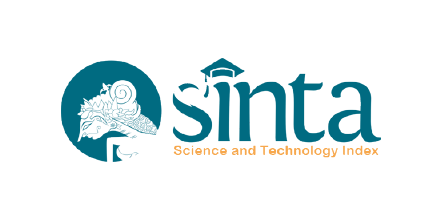Prevention of Sexual Abuse in Children with Mental Disability: A Systematic Literature Review
DOI:
https://doi.org/10.21776/ub.ijds.2019.006.01.10Keywords:
Child Sexual Abuse (CSA), prevention, mental healthAbstract
Children with mental retardation have a 2.5 times higher risk of child sexual abuse (CSA) than other normal children. Mentally retarded children tend to experience verbal ability barriers in describing CSA cases. This study aims to describe the prevention of CSA by parents, teachers and health professionals, including the risk of CSA in mentally retarded children, need for CSA prevention, form of CSA prevention and effectiveness of CSA prevention in mentally retarded children.
Method: PRISMA was used as a guide in compiling the systematic literature review based on the inclusion criteria to determine research articles, search strategies, and research findings. Four databases used in this research included Sage Journal, Ebsco Host, Scopus and Taylor & Francis (Social Sciences & Humanities Subject).
Results: mentally retarded children have a higher risk of CSA than other normal children. The need for CSA prevention are felt by parents and teachers because of the lack of knowledge and ability to do prevention. The form of CSA prevention can be done with various efforts from various parties including parents. The CSA prevention program through role-play or training to face threatening situations is effective for mentally retarded children. It is expected that these findings will become a reference for nurses in ensuring the need for CSA prevention knowledge and ability for mentally disabled children.
References
Devos, Richey, & Ryder, (2017). 39th annual report to congress on the implementation of the individuals with disabilities education act, 2017. washington : U.S. department of education.
https://www2.ed.gov/about/reports/annual/osep/2017/parts-b-c/39th-arc-for-idea.pdf.
Gurol, A., Polat, S., & Oran, T. (2014). Views of mothers having children with intellectual disability regarding sexual education: A Qualitative. Journal of Sexual Disability. 123-133. https://doi.org/10.1007/s11195-014-9338-8.
Helton, J. J., Gochez-kerr, T., & Gruber, E. (2018). Sexual abuse of children with learning disabilities. Journal of Child Malteratment 23(2),157-165. https://doi.org/10.1177/1077559517733814.
Hibbard, & Desch. (2007). Maltreatment of children with disabilities. Journal of Pediatrics. https://www.ncbi.nlm.nih.gov/pubmed/17473105.
Kachlaki, & Faghirpour. (2014). The effect of play therapy in the development of cognitive skills, social and motor educable mentally retarded students. Jurnal UMP Social Sciences and Technology Management. http://jsstm-ump.org/2015 %20Volume%203,%20Issue%203/406-411.pdf
Kim, S., & Kang, K. (2017). Effects of the child sexual abuse prevention education (C-SAPE) program on south korean fifth-grade students competence in terms of knowledge and self-protective behaviors. The Journal of School Nursing.33(2),123-132. https://doi.org/10.1177/1059840516664182.
Kim, Y. (2016). Evaluation of a sexual a bused prevention program for children with intellectual disabilities. The Journal of Behavior Intervention. 209,195-209. https://doi.org/10.1002/bin
Kucuk, S., Platin, N., & Erdem, E. (2017). Increasing awareness of protection from sexual abuse in children with mild intellectual disabilities: An education study Applied Nursing Research. https://doi.org/10.1016/j.apnr.2017.10.016
Murphy, C., Lincoln, S., Meredith, S., Cross, E. M., & Rintell, D. (2016). Sex education and intellectual disability: Practices and insight from pediatric genetic counselors. Journal of Genetic Counseling, 552-560. https://doi.org/10.1007/s10897-015-9909-6
Murphy, N. (2011). Maltreatment of children with disabilities: The breaking point. Journal of Child Neurology 26(8), 1054-1056. https://doi.org/10.1177/0883073811413278
Neill, J. O., Lima, S., Thomson, K., & Newall, F. (2015). The experiences and needs of mothers supporting young adolescents with intellectual disabilities through puberty and emerging sexuality. Research and Practice in Intellectual and Developmental Disabilities, 0(0),1-11. https://doi.org/10.1080/23297018.2015.1077342.
Pusdatin, Republic of Indonesia Ministry of Health. (2014). Grooming Disability in Children. Retrieved 16 November 2018. www.depkes.go.id/download.php?file=download/pusdatin/infodatin/infodatin...pdf
Salvador-carulla, L., & Reed, G. M. (2011). Intellectual developmental disorders: towards a new name, definition and framework for mental retardation / intellectual disability'' in ICD-11. World psychiatry: official journal of the World Psychiatric Association WPA https://doi.org/10.1002/j.20515545.2011.tb00045.x
Thomas, Kumar, & Deb. (2014). Abuse of intellectually disabled children risks as perceived by the mothers. Social Science International.. http://remote-lib.ui.ac.id
Tsuda, S., Hartini, S., Hapsari, E. D., & Takada, S. (2017). Sex education in children and adolescents with disabilities in yogyakarta , indonesia from a teachers gender perspective. Asia Pacific Journal of Public Health. 7-10. https://doi.org/10.1177/1010539517702716
U.S.Department of Health and Human Services. (2015). Child maltreatment 2015.https://www.acf.hhs.gov/sites /default /files /cb/cm2015.pdf.
Walsh, K., Zwi, K., Woolfenden, S., & Shlonsky, A. (2018). School-based education programs for the prevention of child sexual abuse: A cochrane systematic review and, meta analysis. Research on Sosial Work Practice. 28(1),33-55. https://doi.org/10.1177/1049731515619705.
Zhang, W., Chen, J., Feng, Y., & Li, J. (2014). Evaluation of a sexual abuse prevention education for chinese preschoolers. Research on Sosial Work Practice. 24(4), 428-436. https://doi.org/10.1177/1049731513510409.
Downloads
Published
How to Cite
Issue
Section
License
Copyright (c) 2019 Mutia Farlina

This work is licensed under a Creative Commons Attribution-NonCommercial 4.0 International License.















